Key takeaways:
- Selective mutism is an anxiety-related condition preventing children from speaking in certain social situations, despite being able to communicate at home.
- The condition is influenced by temperament, past negative experiences, and parental behaviors, where silence serves as a protective mechanism against anxiety.
- Children with selective mutism may show signs like reliance on nonverbal communication, extreme shyness, and difficulty participating in social settings.
- Supporting children involves creating safe environments, practicing communication skills, and celebrating small achievements to boost confidence.
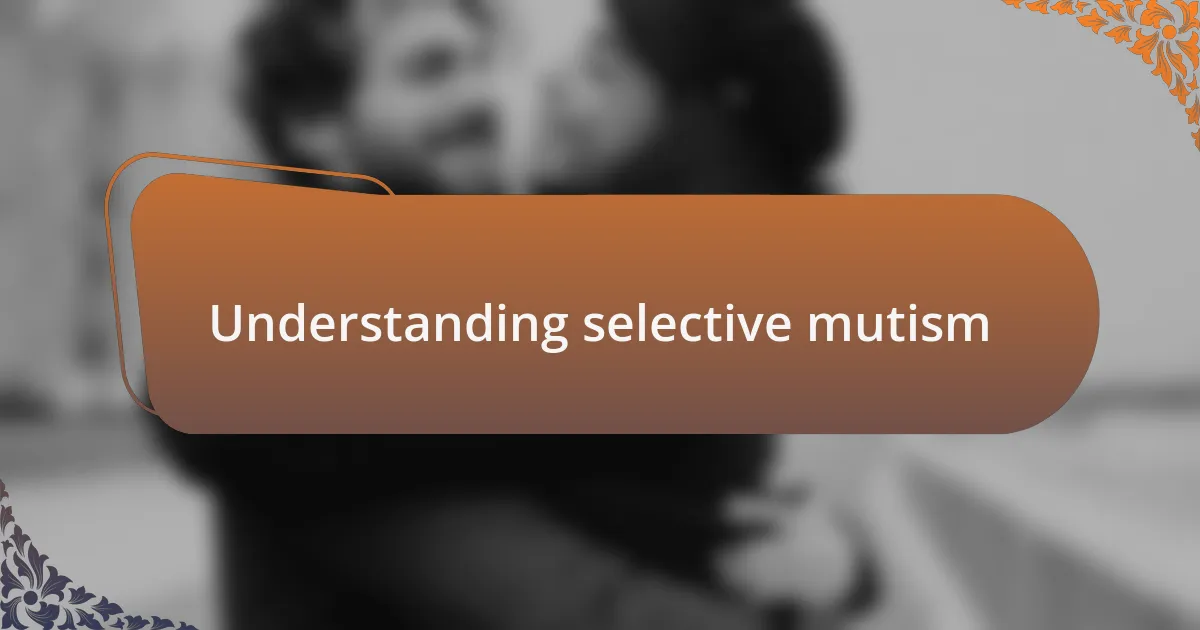
Understanding selective mutism
Selective mutism is a complex anxiety-related condition that affects a child’s ability to speak in certain social situations, even though they can communicate freely in familiar settings. I remember feeling a sense of frustration when, despite having so much to say at home, the words seemed to vanish in social settings. It’s disheartening; have you ever felt like the world around you was muffled while you’re bursting with thoughts?
For many children, this silence isn’t a choice but rather a profound response to intense anxiety. During my childhood, I noticed that certain environments triggered my feelings of inadequacy, making me retreat into silence. It’s painful to think that such a simple act as speaking can become a monumental challenge. How do we help children break through that barrier of fear that surrounds their voices?
Understanding selective mutism necessitates a compassionate approach, recognizing the intricate interplay between social settings and the child’s emotional state. For me, the realization came when I observed how supportive environments allowed others to speak where I couldn’t. Could the right support be what unlocks a child’s voice and helps them navigate their world?

Causes of selective mutism
The causes of selective mutism can often be deeply rooted in a child’s temperament and experiences. I remember how my own shyness felt magnified in situations where I was expected to speak, as if my heart raced in response to the pressure. Was it that fear of judgment or the overwhelming need for acceptance that left me mute in those moments?
Anxiety is a significant factor that contributes to selective mutism. For many children, the anxiety stems from past negative experiences or overwhelming environments. I recall how a particularly harsh comment from a peer silenced me for days, leaving me unsure of how to express myself without facing potential ridicule. Is it any wonder that children might choose silence as a protective mechanism?
Additionally, parental and environmental influences play a crucial role in the development of selective mutism. I often found myself mimicking the behaviors of my caregivers, feeling their unspoken anxieties seep into my own. It made me wonder—could a more nurturing approach have fostered my confidence to speak up? It’s vital to consider how the dynamics at home and in school contribute to a child’s ability to communicate freely.

Impact of silence on children
Silence can weigh heavily on a child’s emotional development, creating a void where self-expression and connection should thrive. I remember feeling isolated during recess, watching my classmates share stories and laughter while I stayed silent, wondering if my words would ever truly matter. Have you ever felt that aching loneliness when silence surrounds you, making you feel invisible?
The impact of silence can also lead to misunderstandings and frustration in social interactions. I often experienced moments where friends would misinterpret my quietness for disinterest, which only deepened my feelings of insecurity. Isn’t it heartbreaking to realize that what we might perceive as a lack of interest could instead be a struggle with the very act of speaking?
Moreover, this prolonged silence can hinder a child’s academic progress and confidence in voicing their thoughts. I found it challenging to contribute in class discussions, fearing the spotlight that came with raising my hand. Don’t you think it’s crucial for children to find safe spaces where they can gradually lift the weight of silence and express themselves without fear?
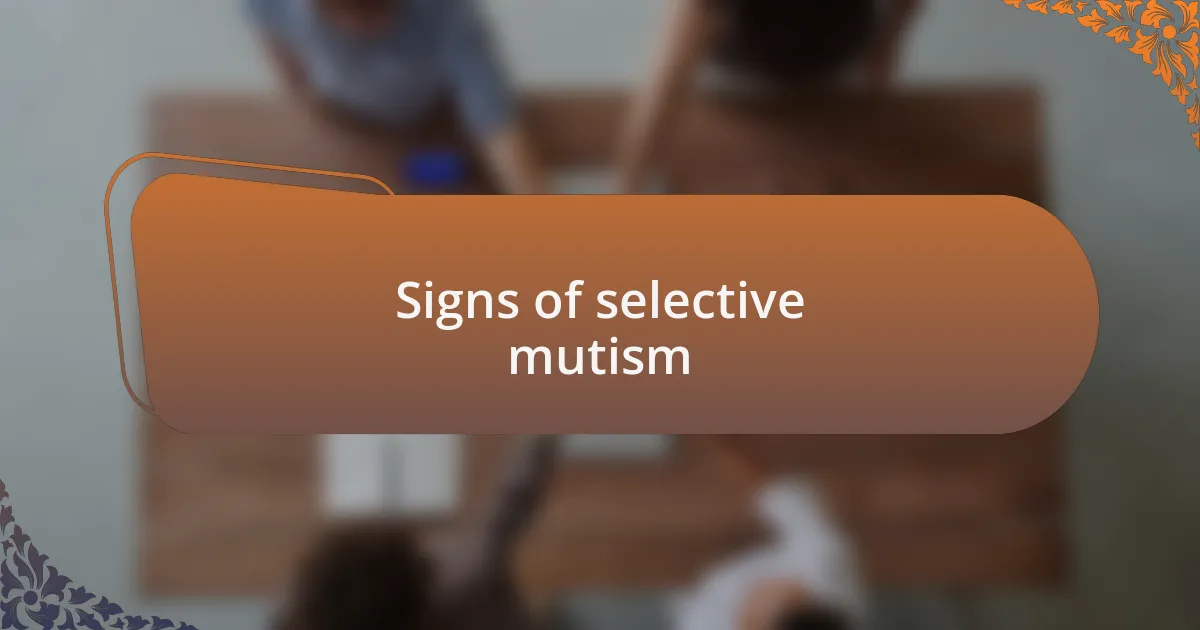
Signs of selective mutism
One of the most telling signs of selective mutism is a child’s ability to speak comfortably at home but struggle in social settings, like school or gatherings. I recall a friend who would chatter endlessly with her family but turned mute when we visited the playground. It’s puzzling, isn’t it? This stark contrast highlights the anxiety that may accompany speaking in unfamiliar environments while showing how different circumstances can trigger their silence.
Another indicator is the reliance on gestures or nonverbal communication instead of words. I remember observing a classmate who would nod or point instead of speaking up, clearly anxious about being heard. Engaging in nonverbal cues may become their way of navigating social situations, but it also reveals a deeper struggle to find their voice. Have you noticed how often children can express themselves without words, yet it’s their silence that raises a red flag?
Additionally, children with selective mutism might exhibit signs of extreme shyness or withdrawal in social scenarios. I once met a child who would cling tightly to their parent, avoiding eye contact and interaction with peers. It brings to mind an important question: how often do we overlook these small behaviors that serve as cries for help? Such reactions can point to the emotional barriers that silence builds, making it essential for caregivers to discern what lies beneath the surface.
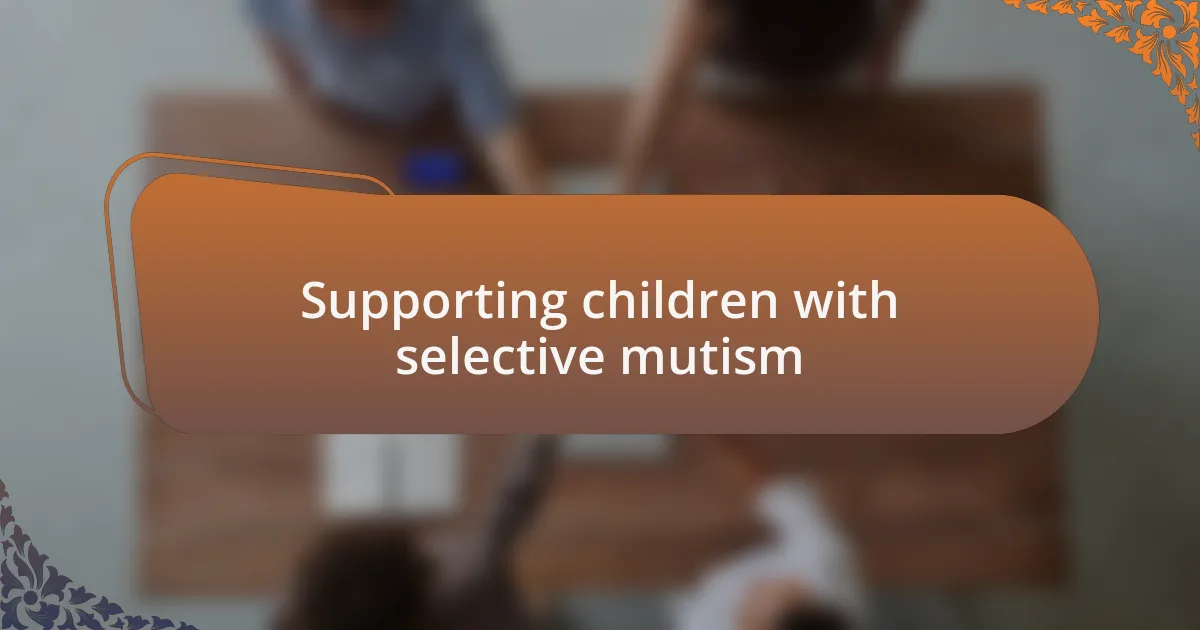
Supporting children with selective mutism
Supporting children with selective mutism requires patience and understanding. I remember a time when a quiet neighbor’s child was invited to a birthday party. To my surprise, her parents prepared her by practicing simple phrases together at home, making her feel secure in a potentially overwhelming situation. Doesn’t it make sense that feeling prepared can help reduce anxiety in those moments?
Creating a safe environment is crucial as well. During my volunteer work, I witnessed the magic of a gentle approach. In one instance, a teacher paired a selectively mute child with a sympathetic buddy who communicated through drawings and gestures. This connection allowed the child to feel less isolated. Have you ever considered how someone’s presence can make a world of difference?
Lastly, celebrating small victories is vital in building confidence. I recall celebrating every time my shy cousin spoke up at family gatherings, even if it was just a word. These moments filled her with pride and encouraged her to try again. Isn’t it uplifting to think about how recognition can empower a child to find their voice, bit by bit?
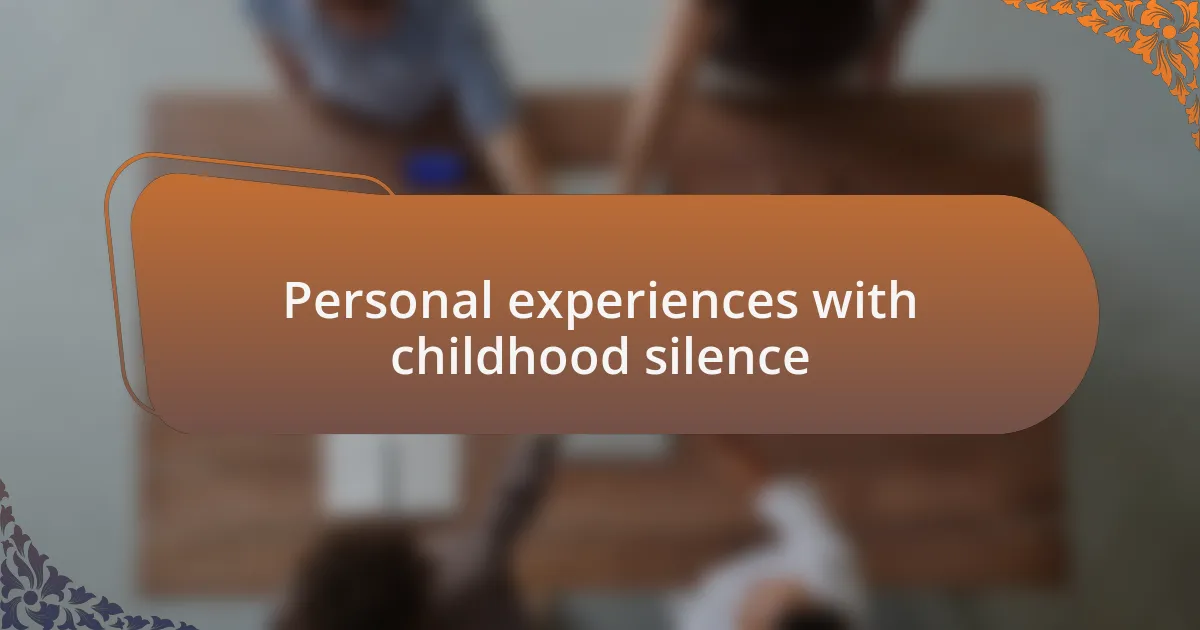
Personal experiences with childhood silence
It’s fascinating how silence in childhood can shape our experiences. I still remember the countless days spent in the classroom, sitting quietly while my classmates laughed and talked around me. That yearning to join in often bubbled beneath the surface, but I felt trapped, as if my voice had vanished into thin air. Have you ever felt the weight of unspoken thoughts?
One vivid memory stands out: a school presentation where I was paired with a friend who always knew what to say. I clung to her side, allowing her to speak while I stood beside her, silent but supportive. In those moments, I learned how comforting it could be to share an experience, even without words. Wasn’t it remarkable how the bond of friendship could ease the struggle of silence?
The emptiness of unexpressed feelings often felt unbearable. I recall sitting alone during recess, watching others play and laugh without me. Instead of feeling left out, I began to observe everything around me, soaking in details that often went unnoticed. This sense of awareness deepened my understanding of the world, but I often wondered how different things would have been if I had found my voice sooner. How many voices go unheard, hiding valuable perspectives just beneath the surface?
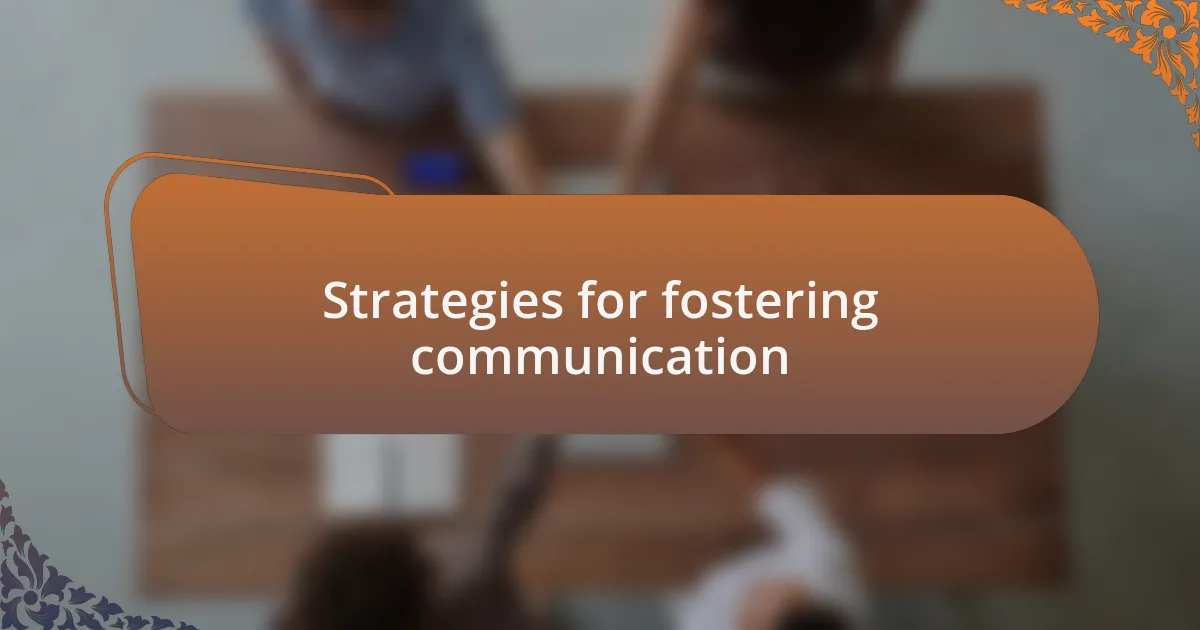
Strategies for fostering communication
Fostering communication in children who experience silence, like I did, can be a transformative journey. One technique that worked well for me was using art as an expressive outlet. I vividly remember doodling in my sketchbook, creating colors and shapes to convey what I couldn’t say aloud. This allowed me to share my feelings in a non-threatening way. Can you imagine the relief of finally expressing thoughts without the pressure of speaking?
Another effective strategy is implementing routine check-ins during low-pressure times. I found that when adults asked me open-ended questions, especially during quiet moments, I felt more at ease to respond. Even simply sharing stories at dinner helped ease my anxiety, creating a space where communication felt organic rather than forced. Have you ever noticed how the right environment can foster a sense of safety?
Encouraging peer interactions is equally significant. I remember being paired with classmates for group activities, where the emphasis was on collaboration rather than verbal exchanges. Those cooperative experiences made it easier for me to gradually contribute my thoughts, often in a whisper at first, but eventually gaining more confidence. Isn’t it interesting how collaboration can serve as a bridge to self-expression?